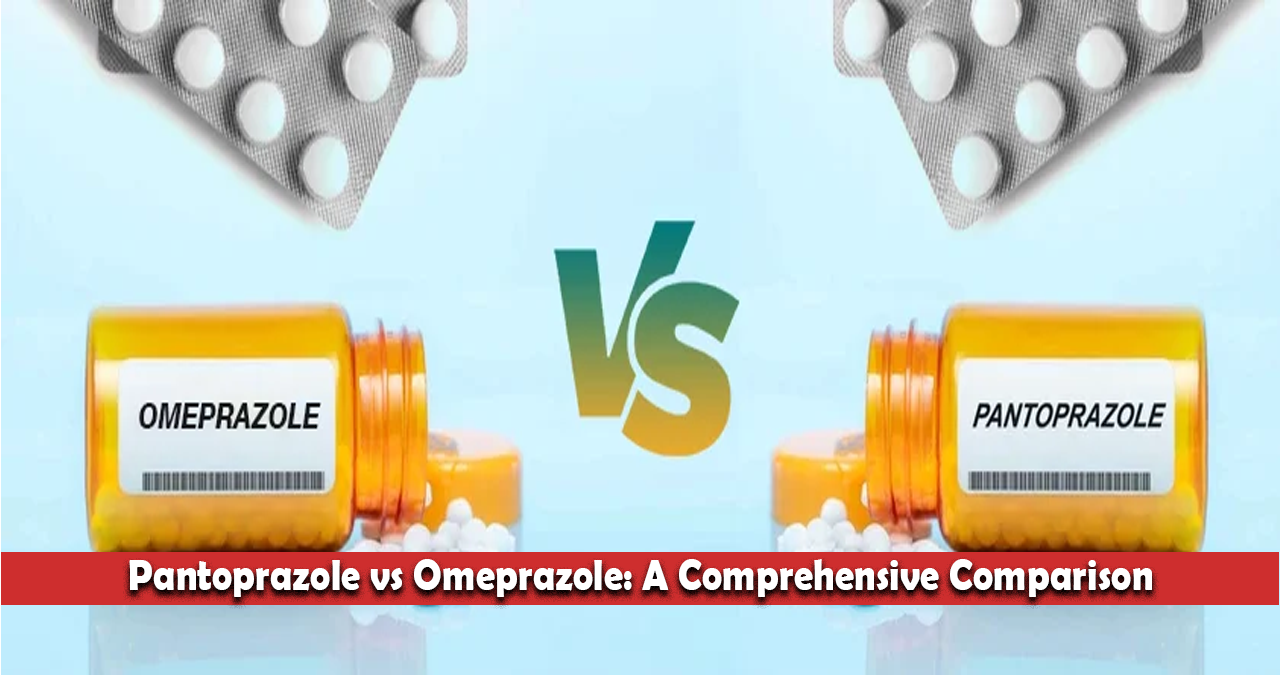What Are Pantoprazole and Omeprazole?
Pantoprazole: An Overview
Pantoprazole vs Omeprazole: Pantoprazole, sold under the brand name Protonix, is a prescription medication used to treat conditions caused by excess stomach acid. It is available in both oral and intravenous (IV) forms, making it a versatile option for patients who may have difficulty swallowing pills or require immediate relief in a clinical setting. Pantoprazole is FDA-approved for treating GERD, erosive esophagitis, and Zollinger-Ellison syndrome, a rare condition where the stomach produces too much acid.
Omeprazole: An Overview
Omeprazole, commonly known by its brand name Prilosec, is another PPI that works similarly to pantoprazole. It is available both as a prescription and over-the-counter (OTC) medication, making it more accessible for those with mild to moderate acid reflux. Omeprazole is approved for treating GERD, erosive esophagitis, Zollinger-Ellison syndrome, and H. pylori infections (in combination with antibiotics). It is also used to prevent stomach ulcers caused by NSAIDs.
Main Differences Between Pantoprazole and Omeprazole
Availability and Forms
One of the primary differences between pantoprazole and omeprazole is their availability. Pantoprazole is only available with a prescription, while omeprazole can be purchased OTC. Additionally, pantoprazole is available in IV form, which is useful for hospitalized patients or those who cannot take oral medications. Omeprazole, on the other hand, comes in delayed-release capsules, tablets, and oral suspensions.
Dosage and Administration
- Pantoprazole: The standard dosage is 40 mg once daily, and treatment typically lasts up to 8 weeks.
- Omeprazole: The standard dosage is 20 mg once daily, with treatment lasting 4 to 8 weeks.
Age Groups
Pantoprazole is approved for use in adults and children aged 5 years and older, whereas omeprazole can be used in adults, children, and even infants as young as 1 month old.
Conditions Treated by Pantoprazole and Omeprazole

Both medications are highly effective in treating acid-related conditions. Here’s a breakdown of the conditions they address:
| Condition | Pantoprazole | Omeprazole |
|---|---|---|
| GERD | Yes | Yes |
| Erosive Esophagitis | Yes | Yes |
| Zollinger-Ellison Syndrome | Yes | Yes |
| H. Pylori Infection | Off-label | Yes |
| NSAID-Induced Ulcers | Off-label | Off-label |
| Barrett’s Esophagus | Off-label | Off-label |
Efficacy: Is Pantoprazole or Omeprazole More Effective?
When it comes to effectiveness, studies have shown that both pantoprazole and omeprazole are equally effective in treating GERD and erosive esophagitis. A meta-analysis of over 40 studies found no significant difference in efficacy between the two drugs. However, pantoprazole may have a slight edge in treating stomach ulcers, particularly those caused by NSAIDs.
The choice between the two often comes down to individual factors such as cost, availability, and specific medical conditions. For example, if you need IV administration, pantoprazole is the clear choice. On the other hand, if you prefer an OTC option, omeprazole is more convenient.
Side Effects: Pantoprazole vs. Omeprazole
Both medications share similar side effects, but there are some differences worth noting:
Common Side Effects
- Headache
- Nausea
- Diarrhea
- Stomach pain
- Gas
Unique Side Effects
- Pantoprazole: May cause dizziness, joint pain, and rash.
- Omeprazole: May cause back pain and coughing.
Long-Term Risks
Long-term use of PPIs, including both pantoprazole and omeprazole, has been associated with:
- Bone fractures
- Vitamin B12 deficiency
- Low magnesium levels
- Increased risk of kidney disease
Drug Interactions: Pantoprazole vs. Omeprazole
Both drugs interact with similar medications, but omeprazole tends to have more interactions due to its metabolism in the liver. Here’s a comparison:
| Drug | Pantoprazole | Omeprazole |
|---|---|---|
| Antiretrovirals (e.g., atazanavir) | Yes | Yes |
| Warfarin | Yes | Yes |
| Clopidogrel | No | Yes |
| Methotrexate | Yes | Yes |
| Iron Supplements | Yes | Yes |
Cost Comparison: Pantoprazole vs. Omeprazole
The cost of these medications can vary depending on insurance coverage and whether you opt for the generic or brand-name version. Here’s a quick comparison:
| Medication | Average Retail Cost | SingleCare Coupon Cost |
|---|---|---|
| Pantoprazole | $179 for 30 tablets | $6 |
| Omeprazole | $100 for 30 capsules | $6 |
Omeprazole is generally more affordable, especially since it’s available OTC.
Conclusion
The Eagles vs Commanders rivalry is a testament to the passion and intensity of NFL football. With a rich history, unforgettable moments, and a bright future, this matchup continues to be a highlight of the NFL season. Whether you’re watching from the stands or from home, the next Eagles vs Commanders 2024 game is sure to deliver excitement and drama. Don’t miss it!



